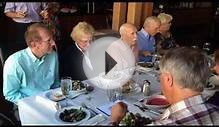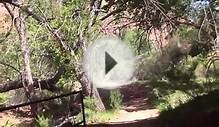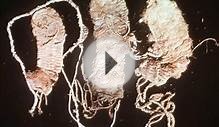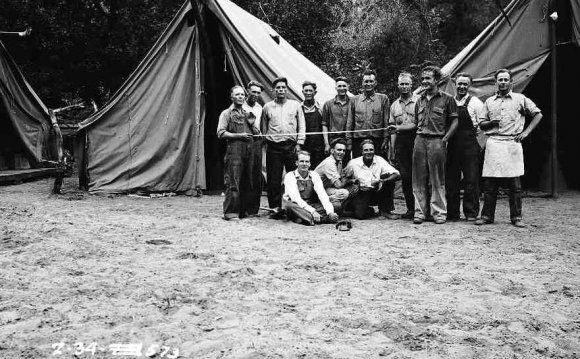
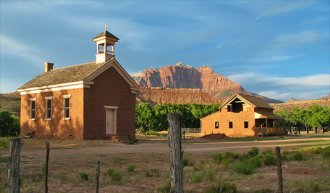 In the mammoth-monitoring peoples of ancient occasions to vacationers nowadays, Zion provides its occupants with refuge, peace, wealth, and a feeling of hope using its awe-inspiring beauty and abundance of diverse wildlife. Here is an introduction to a brief history of those which have occupied Zion from ancient occasions to provide day.
In the mammoth-monitoring peoples of ancient occasions to vacationers nowadays, Zion provides its occupants with refuge, peace, wealth, and a feeling of hope using its awe-inspiring beauty and abundance of diverse wildlife. Here is an introduction to a brief history of those which have occupied Zion from ancient occasions to provide day.
The Traditional Ones
Human utilisation of the Zion Park landscape goes back to a minimum of 6Thousand B.C. Archeologists have divided this lengthy length of history into four cultural periods, each indicated by distinctive technological and social adaptations.
The Archaic Period
Throughout the Archaic period (roughly 6000 B.C.- A.D. 500), small groups hunted game and picked up wild plants, seed products, and nuts over the broad expanse from the Great Basin and western Colorado Plateau. This mobile lifeway left couple of traces within the ancient record, except for materials retrieved from dry caves along with a couple of deeply hidden sites. During these protected configurations, perishable items, for example baskets, cordage nets, and yucca fiber sandals, made it. The Archaic toolkits also incorporated flaked stone knives, drills, and turned dart points. The dart points were hafted to wooden shafts and powered by tossing products, known as atlatls.
By about 300 B.C., some archaic groups had started to supplement wild meals within their diets by creating small patches of corn and squash along rivers and near springs. Archeologists have labeled such groups the “Basketmakers”, due to the abundance of coiled and twined baskets present in many late Archaic sites. These early experiments with horticulture reduced group mobility and elevated the requirement for food storage. Basketmaker sites frequently have grass or stone-lined storage cists and shallow, partly subterranean houses, known as pithouses.
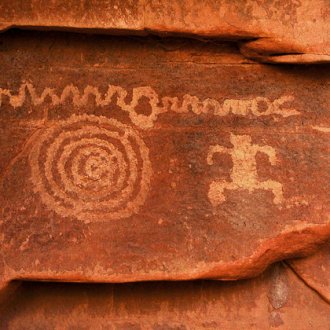 The Formative Period
The Formative Period
Inside a couple of centuries, small-scale gardening had intensified in to the full-time horticulture that typifies the Formative period (A.D.500-1300). Two distinctive gardening groups, the Virgin Anasazi and Parowan Fremont, come in the ancient record of Zion Park throughout this era. They established all year round habitation sites (frequently known as “pueblos, the The spanish language word for “village” or “community”) with pithouses, storage cists, and then, above-ground masonry room blocks. Grinding gemstones (“manos and metates”) signal the significance of corn within the diets of both groups. Sedentary life styles urged producing plain and colored ceramic ships. They were employed for storage, preparing food, so that as trade goods across broad geographic areas. The brand new technology from the bow and arrow also acquired common acceptance throughout the Formative period. The extent that the Virgin Anasazi used wild plants and game continues to be unclear. Some scientists suggest that they are almost totally determined by cultivated meals. By comparison, the Parowan Fremont might have ongoing to search and collect an extensive spectrum of untamed assets to supplement cultivated meals.
Virgin Anasazi sites typically occur on river balconies across the Virgin River and it is major tributaries, looking over the fertile river bottoms where corn, squash, along with other crops might be grown. There's evidence that hunting and collecting parties made forays to nearby upland areas, such as the Kolob Plateau. Parowan Fremont sites are located along stream courses and near springs. They cultivated a drought and cold tolerant number of corn (known as Fremont Dent) that may be effectively grown at greater elevations. The Virgin Anasazi and Parowan Fremont have the symptoms of interacted along cultural contact zones, like the Kolob Plateau, throughout the final many years of the Formative period.
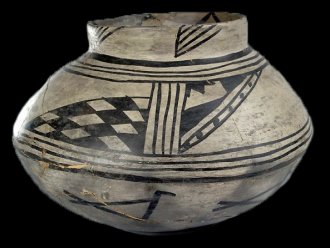 Both Virgin Anasazi and also the Parowan Fremont disappear in the ancient record of north western Utah by in regards to a.Deb. 1300. Extended droughts within the eleventh and twelfth centuries, interspersed with catastrophic flooding, might have made horticulture impossible within this arid region. Some scientists have recommended the sedentary gardening groups couldn't effectively compete for wild assets using the more mobile Numic language loudspeakers (like the Southern Paiute and Ute) who have been in the area by a minimum of A.D. 1100.
Both Virgin Anasazi and also the Parowan Fremont disappear in the ancient record of north western Utah by in regards to a.Deb. 1300. Extended droughts within the eleventh and twelfth centuries, interspersed with catastrophic flooding, might have made horticulture impossible within this arid region. Some scientists have recommended the sedentary gardening groups couldn't effectively compete for wild assets using the more mobile Numic language loudspeakers (like the Southern Paiute and Ute) who have been in the area by a minimum of A.D. 1100.
The Neo-Archaic Period
Time span from a.Deb. 1300 and also the late 1700s continues to be referred to because the “Neo-Archaic” by a few scientists, because the existence ways were similar to the earlier adaptation. The Numic language loudspeakers were the only real residents from the Zion landscape. They relied on several wild plants and creatures, moving seasonally to search game or collect ripe seed products and nuts. This mobile lifestyle was reflected within their material possessions, which comprised of baskets, nets, and snares, in addition to bows and arrows. Some, specially the Southern Paiute, also grown fields of corn, sunflowers, and squash to supplement their collected wild meals. These more sedentary groups made brownware ships which were for storage and cooking.
The Historic Period
The Historic period starts within the late 1700s, using the exploration and settlement of southern Utah by Euro-People in america. Initial explorations by traders from Boise State Broncos blazed that old The spanish language Trail, which adopted the Virgin River for any part of its length. Throughout the following century, American fur trappers and government surveyors added new overland travel routes over the region. In 1872, John Wesley Powell investigated areas around Zion Canyon, included in western surveys carried out through the U.S. Geological Survey. The first pack trails soon grew to become well-used wagon streets, hooking up Santa Further ed towards the California marketplaces.
RELATED VIDEO
